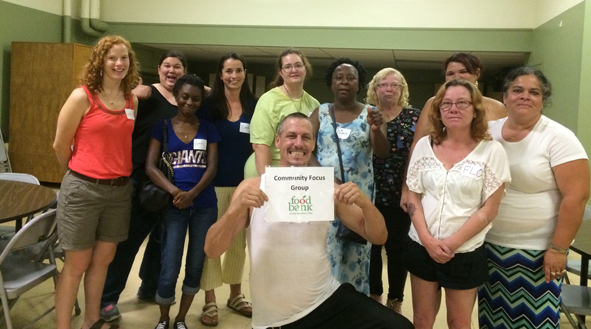
Tools to Engage Webinar Series Part 6: Engaging Constituents, Addressing Root Causes: Food Banks and Beyond
This 60-minute Tools to Engage webinar features Randi Quackenbush and Lyndsey Lyman of the Food Bank of the Southern Tier (FBST) and Alicia Swords, Associate Professor at Ithaca College. In it, Alicia shares some history and insights from her experience working with the University of the Poor and the Poor Peoples’ Campaign to root our conversation in a larger movement to end poverty. Then, Randi and Lyndsey talk about the Speakers Bureau model they’ve developed at FBST, as well as how they are thinking about and using popular/political education to build a shared analysis of the root causes of poverty and hunger. During the Q+A, participants engage around the question of how it is possible for non-profits in general (and food banks in particular) to address root causes and speak honestly about them given the many restraints we face, like funding and capacity.
The resources, organizations, and tools mentioned during the webinar include:
- Kairos: The Center for Religions, Rights, and Social Justice
- Center for Story-based Strategy
- Racial Wealth Gap Simulation
- United for a Fair Economy Ten Chairs Activity
- Closing the Hunger Gap conference – Sept 3-5 in Raleigh NC
- Dropbox of resources gathered from the Constituent Engagement Community of Practice, including information about the Speakers’ Bureau
- To join the Constituent Engagement Community of Practice, click here.
- Tools to Engage webinar series
- Alicia’s article “Action research on organizational change with the Food Bank of the Southern Tier: a regional food bank’s efforts to move beyond charity.”
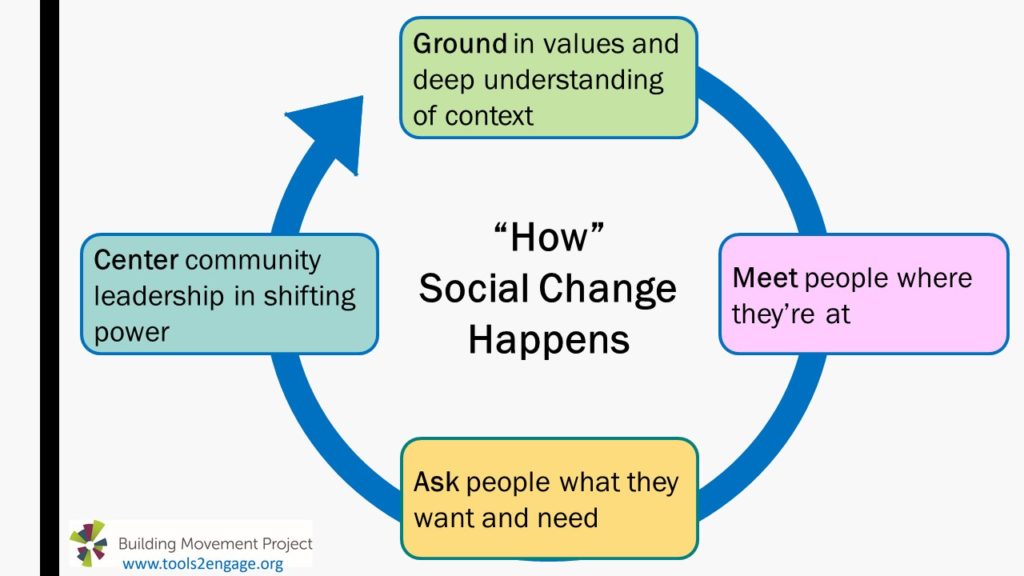
Tools to Engage Part 5: How Social Change Happens, The View From Detroit
How can service providers and organizing groups work together to shift power? Find out in this 60-minute webinar featuring Reverend Roslyn Bouier from the Brightmoor Connection Client Choice Food Pantry and Kea Mathis, Family Engagement Organizer from the Detroit People’s Platform. Rev Roslyn and Kea share insights from the work they are doing in Detroit, and the components that make their approach and partnership unique and justice-oriented. In particular, they explain how their partnership helps connect the dots between food insecurity and public policies that undermine families and put them further at risk, while building community leadership to shift power. Viewers will leave with concrete examples, tools, and next steps for integrating service and social change to address the root causes leading clients to seek services in the first place.
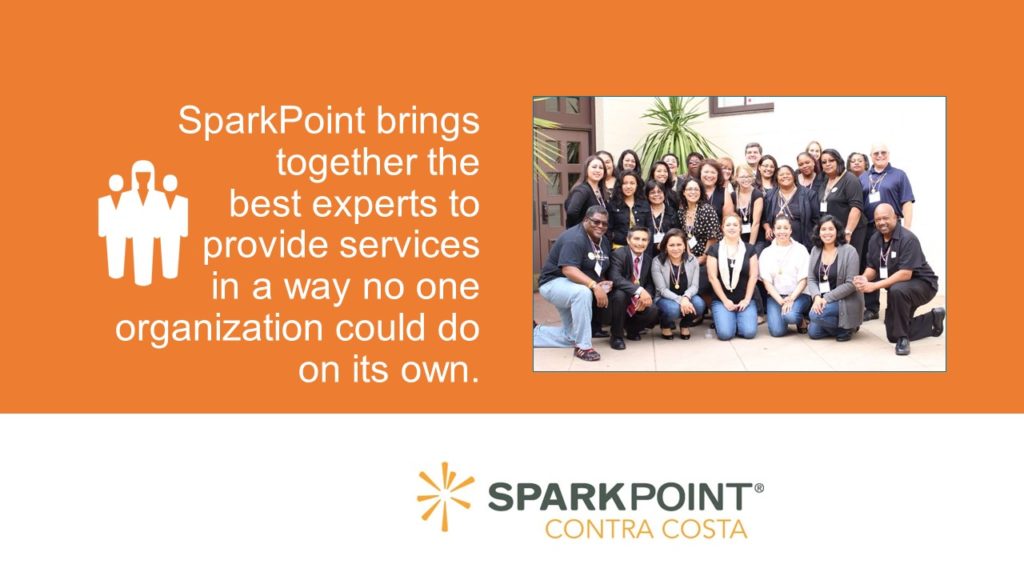
Tools to Engage Webinar Series Part 3: A Deeper Dive into Advocacy
Now, more than ever, direct service organizations are being called upon to advocate for individuals as well as for policy change. By integrating service and social change, organizations can continue to effectively provide needed services, while addressing the root causes that make services necessary. You may be wondering:
- What would integrating service and social change look like for your organization?
- What are some steps you can take, no matter where you are in the process, to more actively engage your constituents?
- How can you build on skills you and your staff already have to make a seamless transition to policy advocacy?
To address these, and many more questions, BMP hosted a webinar (part of our Tools to Engage webinar series) to lift up the work one organization is doing to integrate policy advocacy into the work they’re already doing. In an interview with project consultant Judi Sherman, Executive Director of SparkPoint Contra Costa, Betty Geishirt Cantrell, shared her organization’s experience of volunteering to engage in a “deeper dive” to assess their capacity to integrate policy advocacy into their current service provision and develop a plan for future action. Takeaways include an understanding of the factors helped make this “deeper dive” a success, how the process changed the organization, and how integrating service and social change might not be such a big leap after all.
Watch the recording here, and download a PDF of the slides.
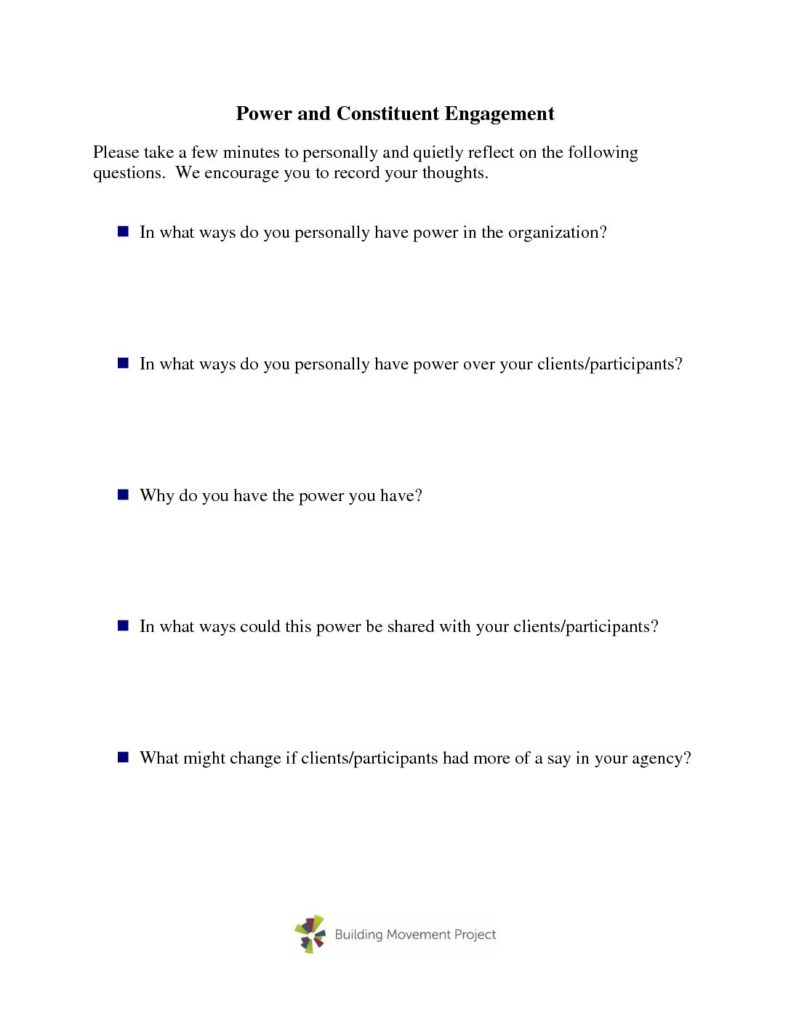
Power and Constituent Engagement
This worksheet, which some may find helpful to use in tandem with the Sources of Power handout, allows individuals to assess where they personally have power within their organizational context, what power they have in relation to the clients/constituents their organization serves, and what might happen if clients/constituents had more of a say in the organizations.

Tools to Engage Webinar Part 2: Barrett Foundation and the Common Good Action Project
This webinar, Barrett House and the Common Good Action Project is part 2 of the Tools to Engage Webinar series. Hear from Building Movement Project consultant Leah Steimel and Connie Chavez, Executive Director of the Barrett Foundation, about the Common Good Action Project in New Mexico and how the Barrett Foundation put lessons from the CGAP cohort into practice to break down silos and transform their Board. Also, learn more about BMP’s Tools to Engage website.

Tools to Engage Webinar Series Part 1: Engage to Change
Maria Mottola, Executive Director of the New York Foundation and Julia Watt-Rosenfeld, Director of Community Organizing and Advocacy at Cypress Hills Local Development Corporation join BMP staff for the first Tools to Engage Webinar to discuss the development and implementation of the “Engage to Change” guide.
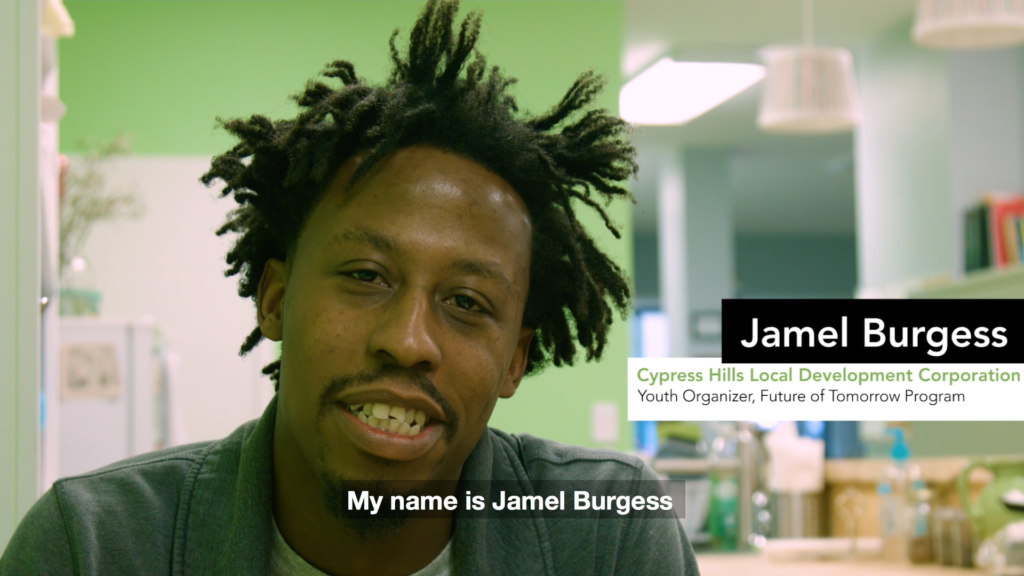
Engage to Change Video Series: Cypress Hills Local Development Corporation Pt 1
Explore how some nonprofits are shifting the way they engage the people they serve. Learn how community members moved from being recipients of expertise to becoming partners in transforming their own lives, the organization, and the surrounding community. In a series of conversations with a dozen New York City nonprofits, hear the motivation behind engaging clients and community members as agents of change in challenging times.
In this video we interview Jamel Burgess, Youth Organizer with Cypress Hills Local Development Corporation.

New Voices at the Civic Table: Facilitating Personal and Social Change
This article describes six pilot initiatives of the Alliance for Children and Families — New Voices at the Civic Table (New Voices), a philanthropy-funded effort to challenge human service organizations to integrate civic engagement as a permanent part of their infrastructure. All six New Voices models included common elements: leadership training, civic education, experiential learning, participatory decision-making, networking, and reflective evaluation. Each also reflected one of four primary variations to civic engagement based on their community needs and demands: self-efficacy, constituent involvement, mobilizing, and organizing. Results demonstrate that civic engagement in human services not only produces a means for promoting social change but also changes the way participants see themselves in the community.
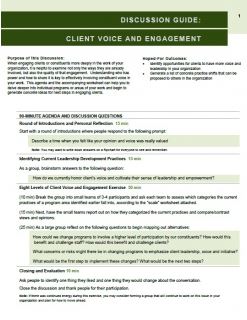
Client Voice and Engagement
When engaging clients or constituents more deeply in the work of your organization, it is helpful to examine not only the ways they are already involved, but also the quality of that engagement. Understanding who has power and how to share it is key to effectively involving constituent voice in your work. This agenda and the accompanying worksheet can help you to delve deeper into individual programs or areas of your work and begin to generate concrete ideas for next steps in engaging clients.
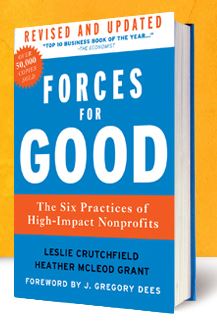
Forces for Good: The Six Practices of High-impact Nonprofits
This book, first published in 2007, is a guide to how nonprofits achieve extraordinary social impact. After studying 12 nonprofit, the authors identified six practices that lead to success. Advocacy and constituent engagement are key.
